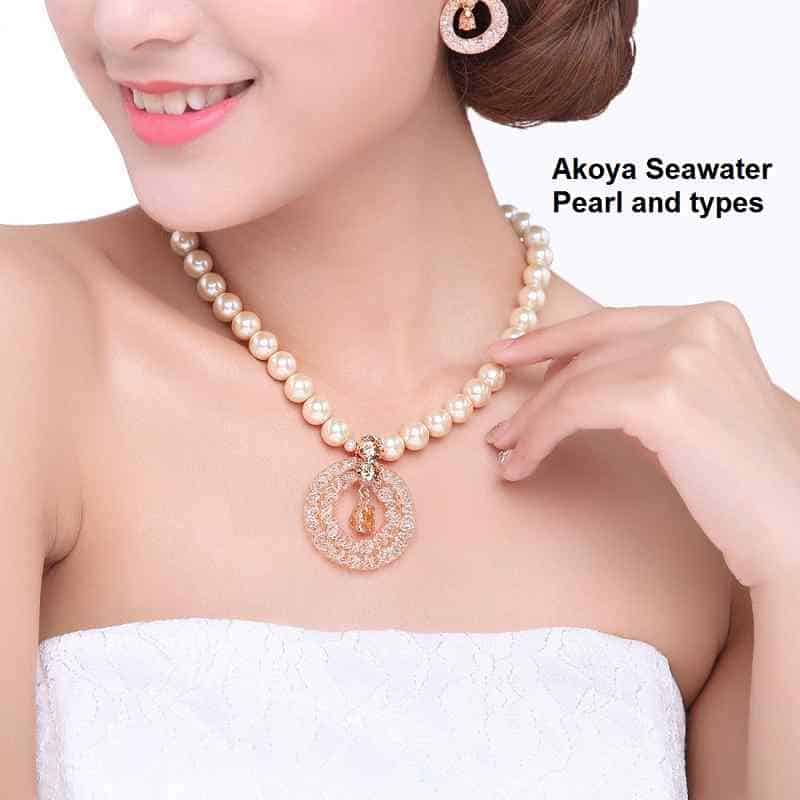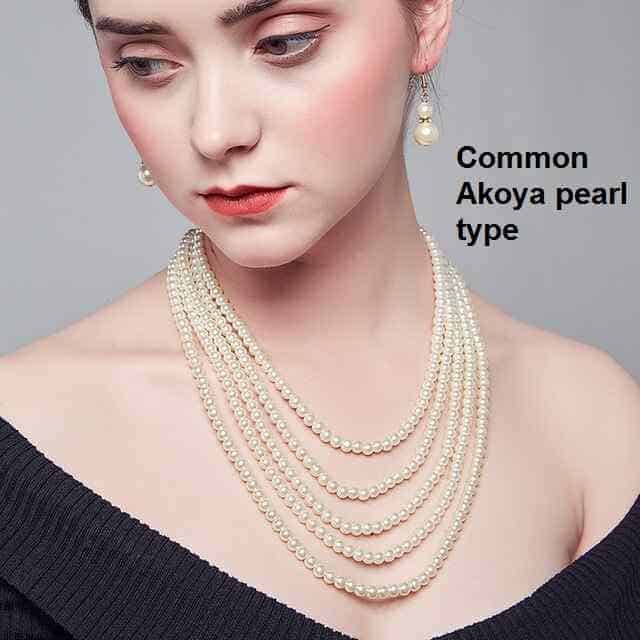As the appearance of pearls increases, the names we hear about pearls are increasing. Freshwater pearls are the most basic distinction, in addition to a variety of finer divisions. Among them, the akoya pearl is one of the sea pearls we most often heard.
Akoya pearl is a species belonging to seawater pearls. Its mother shell is Marsh shellfish. This kind of shellfish is called “あこや” Japanese pronunciation Akoya, Chinese homonym is “Aguwu”, and sometimes translated as “Okaya”.

In fact, Japan’s Akoya pearls are actually the same variety as China’s Nanzhu. The nucleus culture technique of seawater pearls was invented in the middle of the last century when the Japanese practiced in China for many years, and the Marsh babe species used were propagated from the wild scallops introduced from the Guangxi Beihai Sea. From this point of view, Nanzhu is the originator of Akoya.
The reason why Akoya pearl is loved by the world is large because it has a unique delicate luster, which is related to the natural conditions and geographical environment. Japan’s narrow territory spans the three climatic zones of the tropics, temperate zones and frigid zones. Combined with the dual effects of the continental and marine climates, the climate changes are large, the four seasons are distinct, the seawater temperature difference is large, and there are sufficient nutrients.
Under these conditions, the surface of Akoya pearls is covered with a fine layer of calcium crystals, resulting in a uniquely fine texture and rounded luster. It can be said that it is Japan’s unique natural resource environment that has created the unique characteristics of Japanese Akoya seawater pearls.
In addition to its unique qualities, Akoya pearls have a very high demand for the selection and processing of personalized name ankle bracelets. From the beginning of the breeding, it takes about two years to become a pearl. After 2 years of careful cultivation, the pearls recovered will be transformed into gorgeous Akoya sea pearl jewelry, which requires sophisticated selection and processing in order to be sold on the market.
It is understood that the annual output of Akoya pearls is generally about 22 tons. The number of Japanese Akoya seawater pearls are cultivated each year, combined with strict control of the market, do not blindly pursue production, and pay attention to the quality of farming. Coupled with factors such as the special breeding environment, production is difficult to rise.
Therefore, due to the scarcity of production and the unique quality, Akoya Pearl has maintained a stable and go uptrend for many years. It has strong competitiveness in the world pearl market and has won the favor of consumers all over the world.
Common Akoya pearl type
Basically, the certificate of the highest Akoya quality is recognized by the Japanese pearl industry. It is obtained by a number of professional pearls from Japan. The detection time is the longest, and the number of certificates issued each year is also small.

Originally, the term “flower beads” was used in the pearl industry to refer to “Akoya beads that have just been taken from the mother shell and have not been processed is the best quality”. This round, flawless, glossy, with a slight pink tone white pearls, account for about 3% of the total Akoya pearls.
Pearl jewellery sold in the market, once manually punched, produced, processed, theoretically, there are no ‘flower beads’, because the punching action has removed the natural mark of some pearls.
However, in order to facilitate the grading in actual sales, the term “flower beads” is quoted on the finished pearl products, which is also common practice in the industry. Different appraisal organizations will also issue “bead identification” to the true pearls that meet the quality standards. “.”
However, it is worth noting that due to the fact that there is no uniform standard in the Japanese pearl industry, the grading standards of different appraisal organizations are slightly different. In general, to obtain such a title, the following conditions must be met: the diameter reaches 6 mm or more, the nacre is 0.4 mm or more, the gloss is extremely strong, the microscopic flaws are within three, the circle is round, and the degree of deformation is within 5%.
It is worth noting that a single bare bead cannot be rated as an infinity bracelet. The goddess is a flower bead that meets the special interference color. Generally, more than 95% of the single pearls on a necklace contain white, pink, blue or blue, and the growth mark of the pearl skin is less than 1%, which can be specially rated as ‘ goddess ‘, while other appraisers do not qualify for the evaluation of the goddess pearl.
Therefore, the goddess is a more rare rating than the flower beads, and the requirements are extremely high.
Like the flower beads, it refers to the highest quality blue-gray Akoya pearls. The metal is extremely shiny and its production is very rare. The highest quality in the yellow series is called “Queen Akoya” and the evaluation method is similar to that of the flower beads.
Now, as the output of Akoya pearls in Japan’s waters is decreasing, it is very rare to get any of them. So if you meet a conscience merchant and he happens to have pearls of these names, don’t hesitate to take them in the bag, because each one is an extremely rare boutique.
The identification of pearls is to identify whether it is synthetic or natural and does not identify the quality of the pearl. Most of our domestic certificates belong to this category. They only identify the size, color and naturalness of the pearl itself, and do not identify the specific quality of the pearl.
So, it can only tell you that this thing is ‘yes’, but can’t tell you this thing’s ‘good’
This is not necessarily true, because even if it is identified as the same name, there will still be differences in quality, so the price is not determined by the name alone. It depends on the merchant holding a high-quality Akoya pearl to the identification agency to choose what kind of identification. If the choice is to identify whether it is a flower bead and identify has passed, then the certificate issued is the flower bead certificate. Conversely, if you choose to identify the goddess, the certificate issued after passing is the certificate of the mothers bracelets with birthstones. The so-called mirror light and small light bulbs are all adjectives used by merchants to describe and highlight the characteristics of their own products. They are not specialized terminology used by appraisers, nor are the general terminology in the industry. They are just a commercial adjective.


